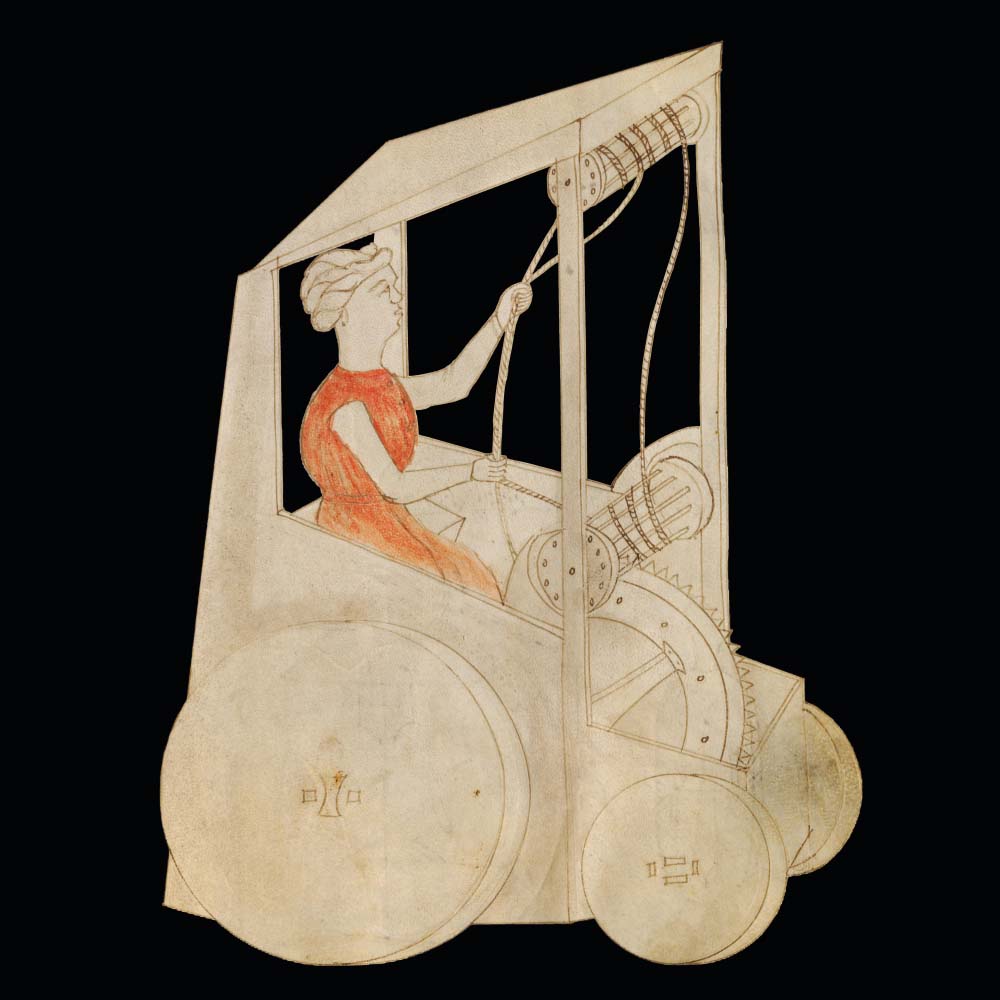The exhibition
The exhibition “MOTUS. The Prehistory of the Automobile”, presented for the first time to the general public at MAUTO in Turin, retraces the main milestones of man’s search for independent movement. The three-wheeled car designed and built by Karl Benz in 1886 is the highlight of this journey: a carriage propelled by the new and revolutionary ‘internal combustion’ engine, marking the watershed between automobile history and prehistory.
From ancient Greek and Egyptian civilisations, through the Renaissance, to Europe and America at the time of the Industrial Revolution, the exhibition travels in space and time, offering reconstructions of working models, car ancestors, and multimedia installations explaining how they work.
This highly educational project supported by a solid scientific basis is exciting for all, older and younger, generations. In most cases, these reconstructions reproducing machines and devices that have come down to us only through literary sources are the result of meticulous investigations of historical and iconographic sources.
Read more
The exhibition includes, among others, the ‘Wheel of Ur’ (Mesopotamia, 3rd millennium B.C.), the ‘Mobile siege tower’ (Rhodes, 304 B.C.), Hero’s ‘Mobile theatre’ (Alexandria, 50 A.D.), Leonardo da Vinci’s ‘Self-propelled cart’ (1478-1485) and the ‘Velocimano’ (Italy, 1819).
The brainchild of the Museo Galileo in Florence and the Sidecar Museum in Cingoli (Macerata), “MOTUS. The Prehistory of the Automobile” is curated by Giovanni Di Pasquale, historian of ancient science and technology and Scientific Deputy Director of the Museo Galileo, and Costantino Frontalini, Director of the Museo del Sidecar. It is co-produced by Museo Galileo and Civita Mostre e Musei in collaboration with MAUTO. Reconstructions by the Museo del Sidecar; 3D animations by the Museo Galileo’s Multimedia Laboratory; and interactive exhibits by camerAnebbia creative studio in Milan.


